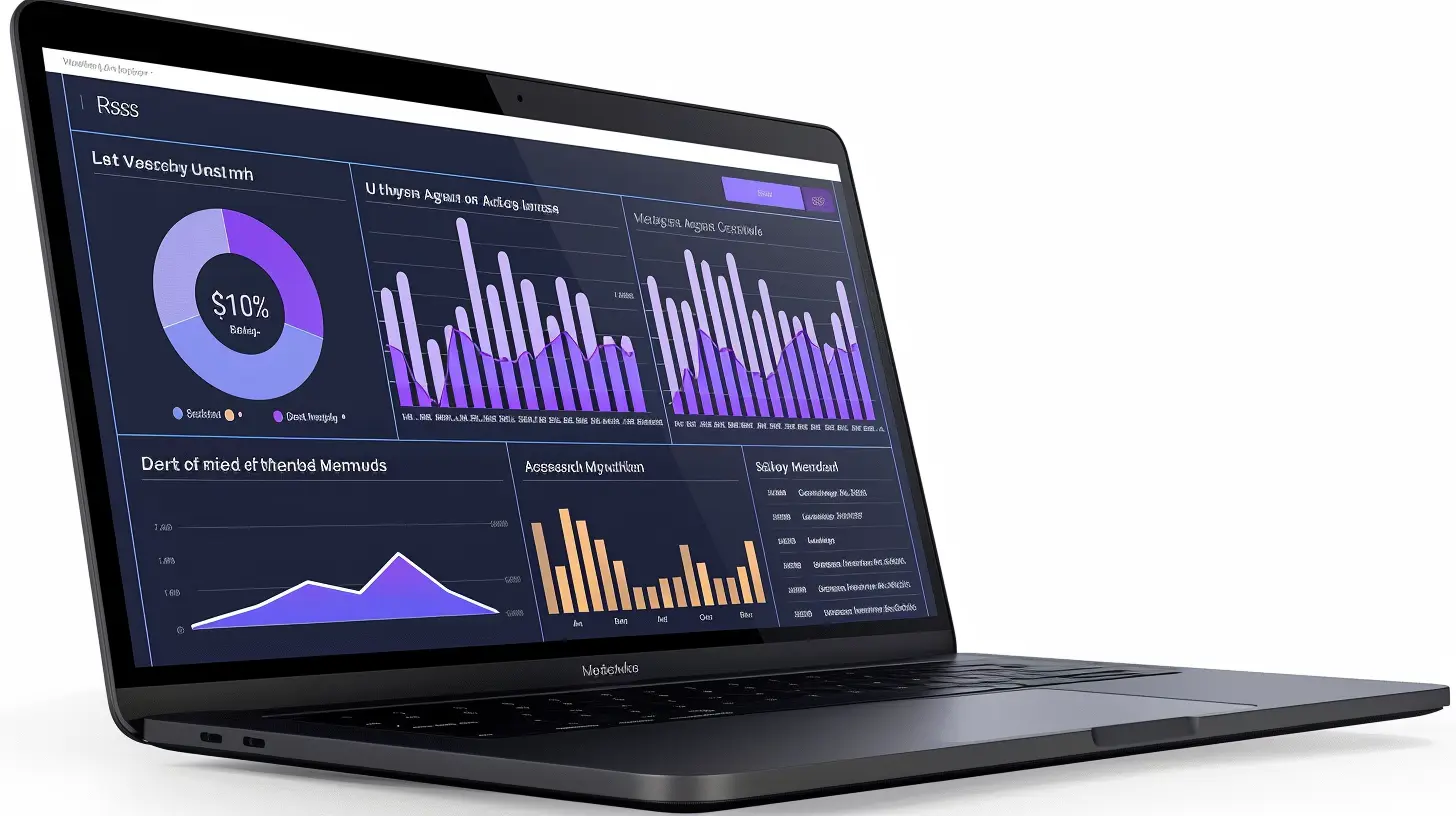The Role of Data Analytics in Modern Risk Management
16 October 2025
Let’s face it—risk is a fact of life in business. Whether you’re running a startup, managing a well-established corporation, or even freelancing, there’s always some level of uncertainty involved. But here’s the thing: while risks can’t be entirely eliminated, they can absolutely be managed. And in today’s digital-first world, guess what’s flipping the game when it comes to understanding and tackling risks? Yep, you guessed it—data analytics.
Data analytics isn’t just a buzzword anymore; it’s a necessity. It’s like the flashlight you use to navigate a dark, unfamiliar path. It helps businesses not only identify potential risks faster but also handle them smarter. The result? You save time, money, and your peace of mind. Let’s dive in and unpack the role of data analytics in modern risk management. Buckle up, because it’s going to get practical.
What is Risk Management, and Why Does it Matter?
Before we dive head-first into the tech stuff, let’s set the stage here. What exactly is risk management? In simple terms, it’s the process of identifying, assessing, and controlling threats to a company’s finances, operations, or reputation.These threats can come from anywhere—market volatility, fraud, legal liabilities, cybersecurity breaches, or even natural disasters. Without a clear risk management strategy, it’s like steering a ship in stormy seas without a compass. Not a fun ride.
Now, traditionally, risk management relied heavily on experience, intuition, and historical data. Don’t get me wrong; those tools have their place. But in today’s complex, fast-moving environment, they just don’t cut it anymore. This is where data analytics swoops in like a superhero to save the day.
The Basics: What is Data Analytics?
Alright, let’s get everyone on the same page. Data analytics is the process of collecting, organizing, and analyzing raw data to extract meaningful insights. Think of it as sifting through mountains of sand (data) to find gold nuggets (actionable insights).Instead of making gut-based decisions, data analytics allows businesses to make informed, evidence-based decisions. Sounds good, right? But wait, there’s more—it’s not just about making decisions; it’s about making better decisions.
In the realm of risk management, data analytics takes this a step further. It helps identify risks even before they materialize and facilitates proactive measures to mitigate them. It’s like having an early warning system for your business.
How Data Analytics is Transforming Modern Risk Management
1. Identifying Risks in Real Time
Let’s say your company operates globally, and you’ve got supply chains zigzagging across continents. It’s a logistical masterpiece but also a potential minefield of risks—pandemic disruptions, transportation delays, or even geopolitical instability.By leveraging data analytics, you can monitor real-time data streams from various sources (think IoT devices, social media, news reports) to detect risks as they arise. This means you’re not caught off guard when something goes sideways. It’s like having a weather app that warns you of a storm before it hits.
2. Predictive Analytics for Proactive Risk Management
Here’s where things get seriously cool—predictive analytics. By analyzing historical data and trends, predictive models can forecast potential risks.For example, a financial institution can use predictive analytics to identify customers showing early signs of defaulting on loans. Or a cybersecurity team can predict potential hacking attempts based on patterns of unusual behavior. It’s all about staying one step ahead.
Think of predictive analytics as the fortune teller of risk management—but instead of a crystal ball, it relies on cold, hard data.
3. Improved Fraud Detection and Prevention
Fraud is like a sneaky thief in the night, draining companies of resources without warning. But with data analytics, businesses can detect even the subtlest signs of fraud.For instance, algorithms can analyze thousands of transactions in seconds to spot anomalies—like a sudden spike in purchases from a suspicious location or an unusual spending pattern on a credit card. The system raises the red flag, and action can be taken immediately. It’s like having a highly vigilant watchdog that never sleeps.
4. Enhanced Decision-Making with Risk Scoring
Here’s the deal: not all risks are created equal. Some risks are minor hiccups; others are full-blown disasters waiting to happen. Data analytics helps companies assign a “risk score” to each threat, based on its likelihood and potential impact.This scoring system allows businesses to prioritize and allocate resources effectively. It’s the difference between putting out a small campfire or tackling a raging wildfire.
5. Regulatory Compliance Made Simple
In today’s age, regulations are constantly evolving. Whether it’s GDPR, HIPAA, or industry-specific compliance rules, keeping up can feel like herding cats.Data analytics simplifies compliance by tracking regulatory changes and ensuring that your business processes, documentation, and reporting are in line with legal requirements. It minimizes the risk of costly penalties and damaged reputations. A win-win, wouldn’t you agree?
6. Reducing Operational Risks
Operational risks—like machinery breakdowns, bottlenecks in production, or inventory mismanagement—can cripple a business. But with data analytics, companies can predict these risks and prepare accordingly.For example, predictive maintenance powered by analytics can alert manufacturing teams when a machine is likely to fail, minimizing downtime. It’s like having a car dashboard that tells you when your engine needs attention well before you’re stranded on the highway.
Real-World Applications of Data Analytics in Risk Management
The Financial Sector
Banks and insurance companies are leading the charge when it comes to using data analytics in risk management. They employ it for credit scoring, fraud detection, and even to monitor market risks.Take insurance, for instance. Insurers are using telematics (data from car sensors) to assess driving behavior and offer personalized premiums. Risk is calculated precisely, benefiting both the company and the customer.
The Healthcare Industry
Hospitals and healthcare providers use data analytics to predict patient readmissions, monitor drug interactions, and even detect potential outbreaks of diseases. It’s a lifesaver—literally.Cybersecurity
In our ever-connected world, cybersecurity risks are skyrocketing. Analytics plays a crucial role in detecting vulnerabilities, identifying potential breaches, and protecting sensitive data. It’s the digital equivalent of installing security cameras in every corner of your house.Retail
Retailers use data analytics to predict inventory fluctuations, manage supply chain risks, and even gauge customer sentiment. The result? Happier customers and less waste. Everyone wins.Challenges in Implementing Data Analytics for Risk Management
Now, before we crown data analytics as the savior of all businesses, let’s talk about the challenges. Because let’s be real—nothing worth having comes easy.1. Data Overload
With the explosion of big data, companies are grappling with an overwhelming amount of information. Analyzing this volume efficiently requires robust systems and skilled personnel.2. Data Quality Issues
Bad data leads to bad decisions. Ensuring data accuracy, completeness, and consistency is easier said than done.3. Privacy Concerns
Handling sensitive data comes with the responsibility of safeguarding it. Any breaches can lead to legal troubles and loss of customer trust.4. Cost of Implementation
Investing in advanced analytics tools and hiring skilled analysts can be expensive, especially for smaller businesses.Future Trends in Data Analytics for Risk Management
So, what’s next? Well, the future is exciting. With advancements in artificial intelligence (AI) and machine learning, analytics is only getting smarter. Automated risk assessment, real-time monitoring, and even self-healing systems are on the horizon.Moreover, as data-sharing ecosystems evolve, businesses will gain access to even richer datasets, enhancing their risk management strategies further.
Final Thoughts
Data analytics is no longer optional when it comes to modern risk management—it’s essential. It’s like upgrading from a map to GPS. Sure, you could technically find your way without it, but why make life harder for yourself? With the ability to identify, predict, and mitigate risks effectively, data analytics isn’t just a tool; it’s your business’s secret weapon.So here’s the bottom line: if you’re not leveraging data analytics for risk management, you’re leaving your business exposed. The tools are there, the data is there—the only thing missing is you taking action.
all images in this post were generated using AI tools
Category:
Risk ManagementAuthor:

Remington McClain
Discussion
rate this article
1 comments
Sara McElveen
Data analytics in risk management: because guessing isn't a strategy, even if it worked in Vegas!
October 29, 2025 at 11:40 AM

Remington McClain
Thank you! Absolutely, relying on data analytics transforms risk management from guesswork into a strategic, informed approach.


